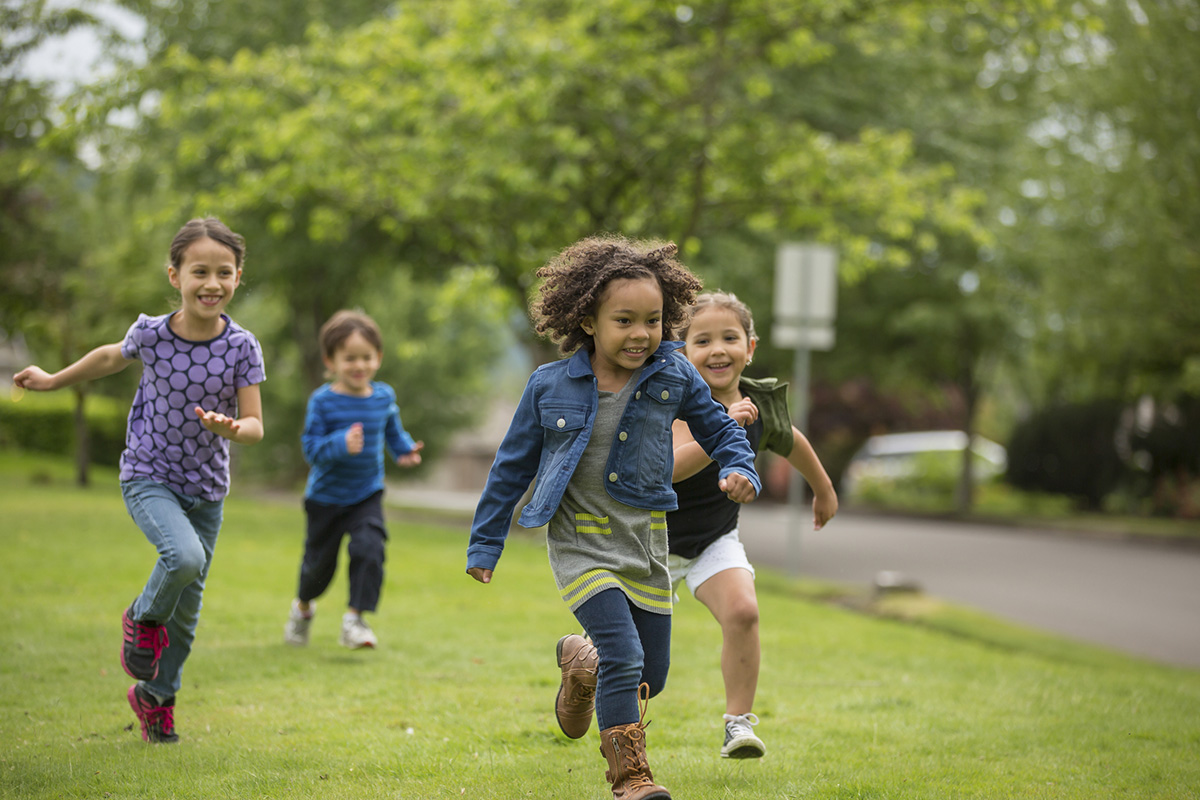
By Audrey Klecka, NP, Nansemond Pediatrics
Playing outside is an important part of childhood. It helps kids stay active, build confidence, and develop social skills. But as parents, we also need to make sure playtime is safe. By following these simple tips, you can create a safe environment for your little ones to explore and have fun while maintaining your peace of mind.
Stay Close and Keep Watch
Children should always be supervised while playing outside, even in a fenced yard. If you need to step away, take your child with you or have another trusted adult keep an eye on them. Also, make sure your kids take regular breaks to hydrate and reapply sunscreen, especially between 11 a.m. and 4 p.m.
Choose Safe Areas to Play
Make sure your child plays in a safe space, away from streets, driveways, or other potentially dangerous areas. Check the area regularly for sharp objects, broken glass, or toxic plants. If possible, set up play zones with soft surfaces like grass or rubber mulch to cushion accidental falls.
Never Leave Kids Unattended Around Pools, Hot Tubs
Drowning is the No. 1 cause of death in children who are younger than 4 years old. If you have a pool, install a four-sided fence with a self-latching gate, and be sure to empty the kiddie pool right after use. Locking doors or installing alarms that detect when someone enters the area or falls in the water can also help prevent drowning. Always watch young children around any body of water, including ponds, fountains, and hot tubs. Enrolling your child in swimming lessons can be a great way to teach them about water safety.
Stay Safe in the Sun
The sun’s rays can harm your child’s delicate skin. Keep them protected by:
- Dressing them in lightweight, long-sleeved clothing and a wide-brimmed hat.
- Applying sunscreen with at least SPF 30 and reapplying every two hours or after swimming.
- Encouraging play in shaded areas, especially during peak sun hours.
Stay Hydrated
Kids can get dehydrated quickly when playing outside. Take water breaks frequently, even if they don’t ask for something to drink. Watch for signs of overheating, such as excessive sweating, tiredness, or dizziness. If needed, take breaks in a cool, shady spot.
Playgrounds: Check Before They Climb
Before letting your child use playground equipment, inspect it for loose bolts, sharp edges, or broken parts. Ensure swings, slides, and climbing structures are sturdy and appropriate for your child’s age. Soft landing surfaces, such as mulch or rubber mats, can help reduce the risk of injury if they fall.
Protect Against Bug Bites
Insect bites can be irritating—or even carry diseases. To keep your child safe:
- Apply child-safe insect repellent. Consider one with 10% to 30% DEET. However, don't use DEET on children younger than 2 months.
- Dress them in long sleeves and pants when playing in grassy or wooded areas.
- Check for ticks after playing outside, especially behind their ears, under their arms, and in their hair.
Don’t Mow Near Children
Power mowers can fling sticks, stones, and other objects with enough force to do serious harm. While it might sound fun to let your child join you on a riding mower, the safest bet is to mow the lawn when kids aren't around. Mowers, hedge trimmers, and other tools should be stored out of reach, along with gasoline cans and lawn chemicals. If you want to involve older kids in yard work, consider planting a container garden together, using kid-friendly shovels and gloves.
Prevent Burns From Grills, Fire Pits
When you cook outdoors or enjoy an open fire, use a child safety fence to keep the little ones at a safe distance. Explain that grill surfaces are hot and can burn them—like the kitchen stove—so we never touch them. Position gas grills so kids can't reach the knobs. Always douse a wood fire before leaving the area, and make sure charcoal is cold before dumping it.
Set Clear Rules and Boundaries
Kids need to know where they can and cannot play. Set clear rules, such as:
- Stay in the yard or designated play area.
- Don’t go near the street or driveway.
- Ask for permission before leaving the yard.
Review these rules with your kids often and use positive reinforcement. Remember, outdoor play should be fun and stress-free. By following these simple steps—such as supervising, creating safe play areas, and teaching awareness—you can give your child the freedom to explore safely. A little preparation goes a long way in making sure your child has a great time playing outside.






